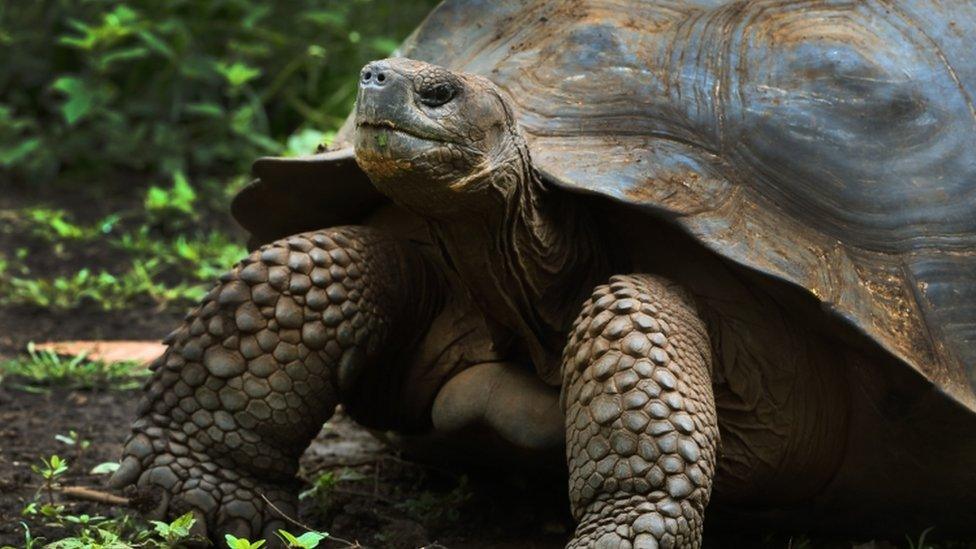Galapagos Islands: New species of giant tortoise discovered
- Published
- comments

A new species of giant tortoise has been discovered in the Galapagos Islands, in the Pacific Ocean.
Researchers took DNA samples from the animals living on one island and found that they had never been recorded before.
Scientists compared the genetics of giant tortoises on the island now with tortoise bone samples from 1906 and discovered that they were different.
This surprise meant the scientists had discovered a new species!
Researchers from the University of Newcastle in the UK and Yale University in the US, found that the DNA samples from museums, did not match the tortoises living on the island now.
It was thought that the tortoises living on San CristГіbal, the fifth largest island of the Galapagos, all came from one single species called Chelonoidis chathamensis.
But this new discovery of species suggests that there may be many tortoises on the island currently which are from a different species and not from the Chelonoidis chathamensis species.
The species of giant tortoise that inhabits San CristГіbal Island, until now scientifically known as Chelonoidis chathamensis, genetically corresponds to a different species, which was believed to be extinct since the beginning of the 20th century.
The Big Question: How long would it take for a tortoise to walk around the world?
Scientists will try to recover DNA from the bones of shells of the tortoises in museums, so they can see if the tortoises living now will need to be given a new name and understand how they are related to each other.
The Galapagos islands are found in the Pacific Ocean, off the coast of Ecuador.
It was made a UNESCO World Heritage site, because of its huge amount of wildlife and biological diversity.
There are species on the islands that aren't found anywhere else in the world.
- Published26 November 2017
- Published20 May 2021
- Published28 September 2021
